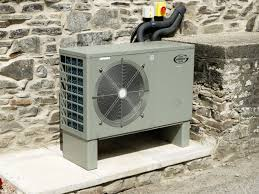
Heat pumps are designed to transfer heat between the air inside a house and the outdoor air or ground. The system consists of two components; a unit and an indoor air handling unit also known as an air handler. The outdoor unit resembles a gas boiler or oil system featuring a coil and fan. In cooling mode, the coil acts as a condenser while in heating mode it functions as an evaporator. The fan blows air over the coil to enable this heat exchange. For Air Source Heat Pumps Worcester, visit https://gsmlimited.com/services/air-source-heat-pumps/worcester
An air source heat pump can be utilised directly to rooms through radiators or underfloor heating systems. It can provide hot water for taps and showers using a hot water cylinder. Additionally it can be combined with panels to create a renewable energy solution.
During winter the heating capacity of a heat pump is influenced by the temperature. When the outdoor temperature falls below this balance point, the heat pump becomes unable to absorb heat to match the overall heat loss from the building. At that point supplementary conventional heating may need to be switched on.
To ensure performance of a heat pump, insulation in homes is crucial. It can also be beneficial to combine the heat pump with radiators and underfloor heating in order to distribute the heat efficiently. When installing the system it is crucial to ensure that it is properly sized. This will optimise energy savings, guaranteeing that your heating needs are met. You can seek assistance from an energy advisor who can guide you through this process and even help you apply for government grants.

